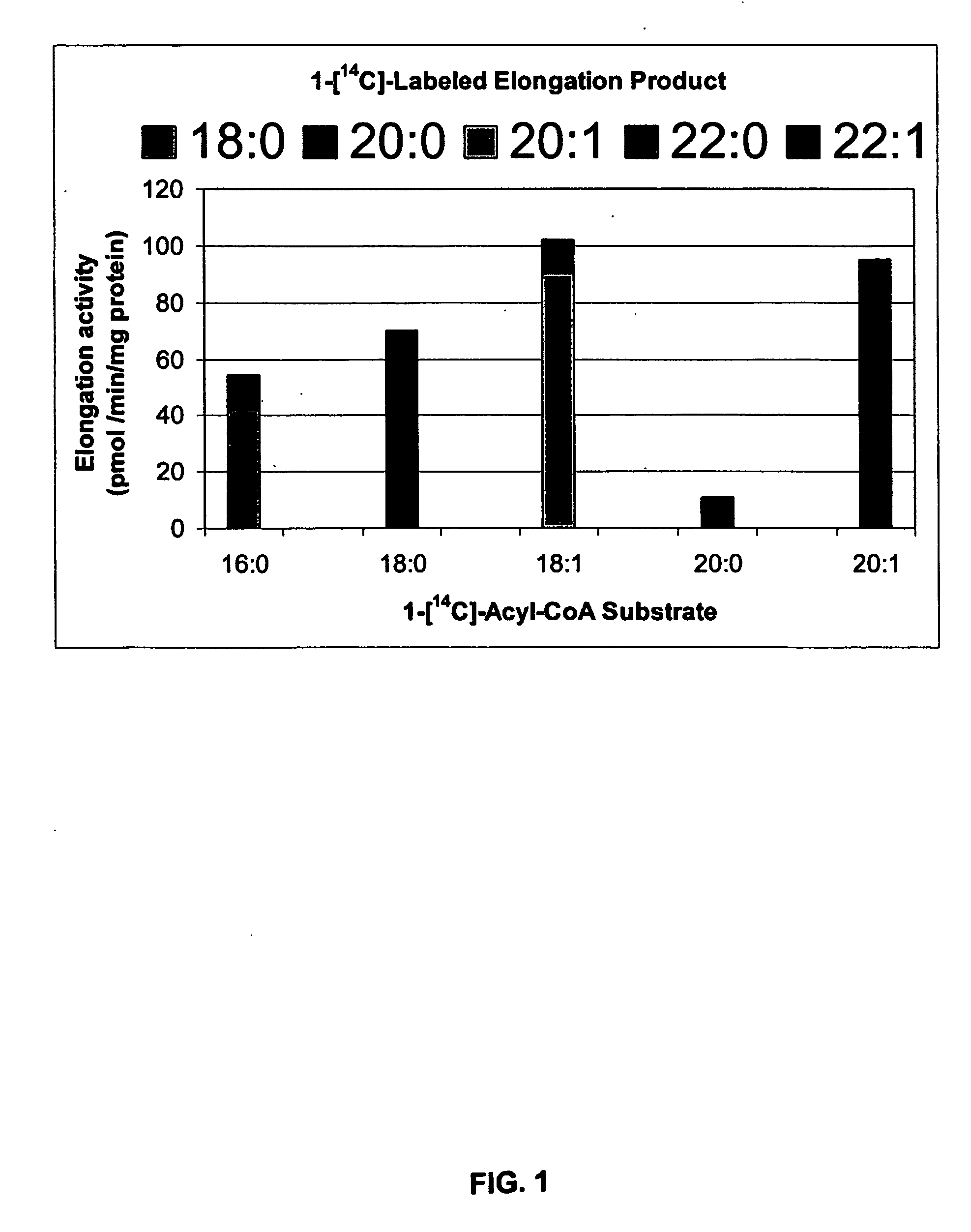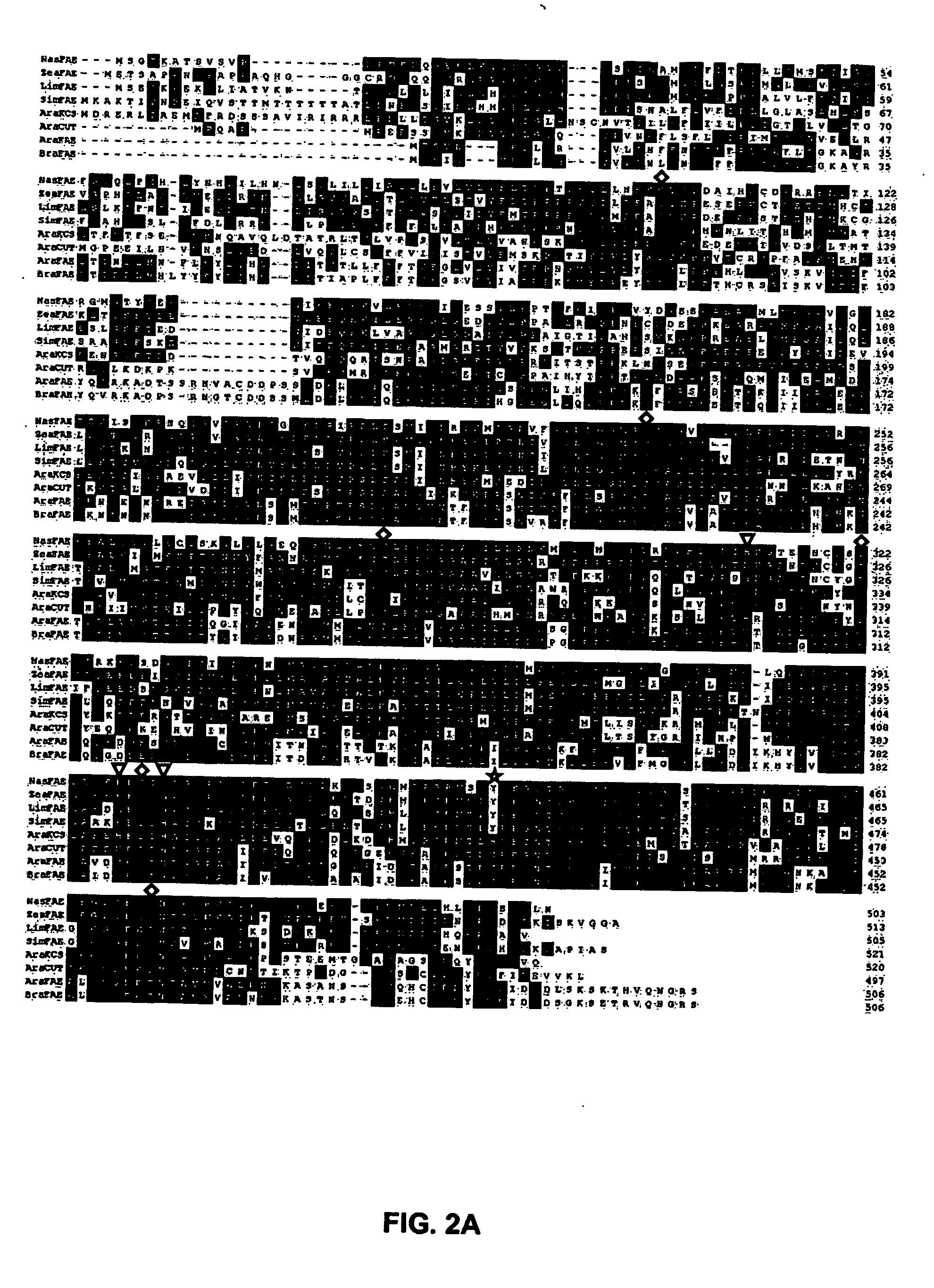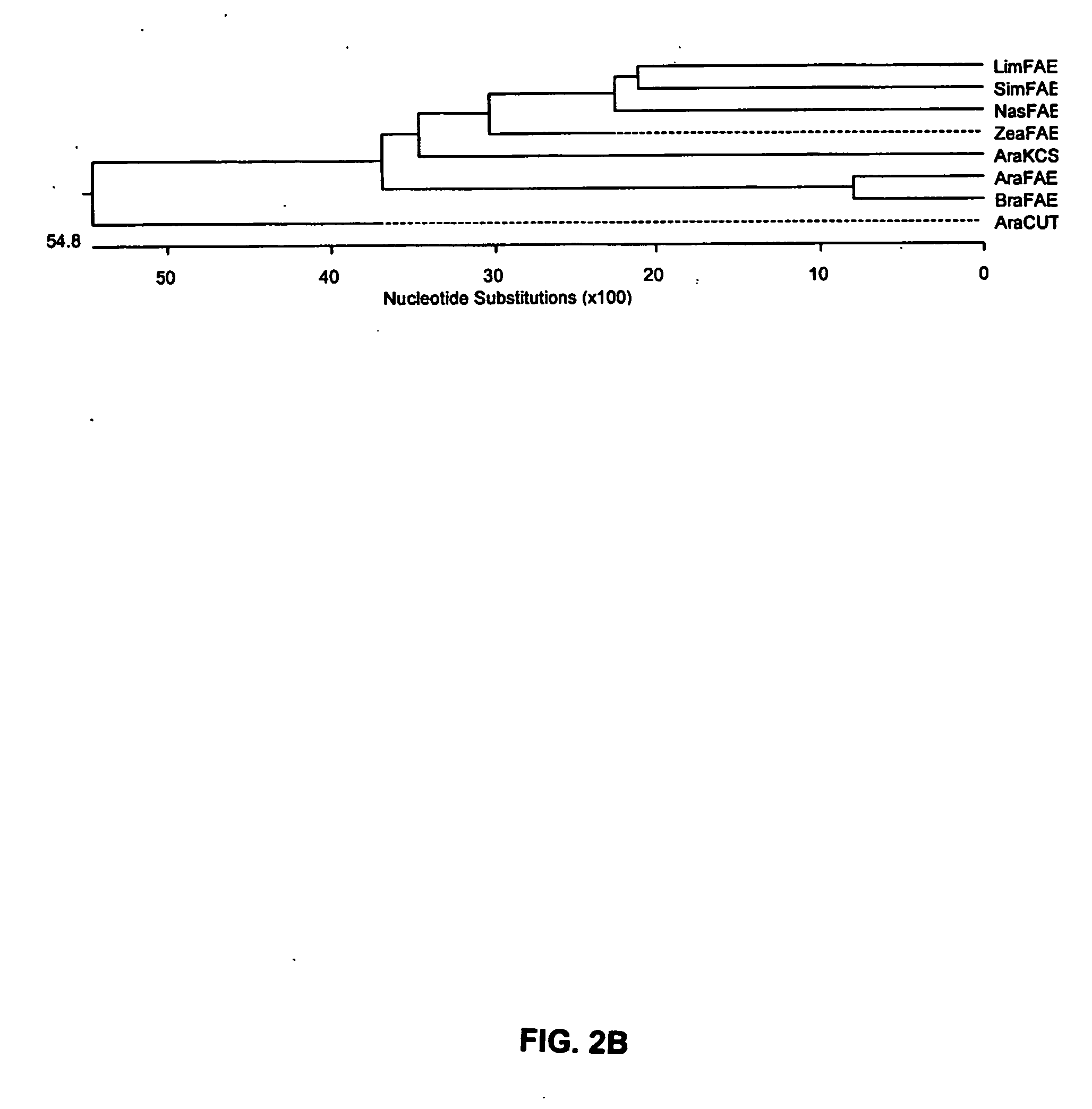Fatty Acid Elongase (Fae) Genes And Their Utility In Increasing Erucic Acid And Other Very Long-Chain Fatty Acid Proportions In Seed Oil.
a technology of erucic acid and long-chain fatty acids, which is applied in the field of fatty acid elongase genes and their utility in increasing erucic acid and other very long-chain fatty acid proportions in seed oil, can solve the problems of difficult isolation and characterization of soluble condensing enzymes, knowledge of the mechanism of elongation and properties of fae1 and other elongase condensing enzymes,
- Summary
- Abstract
- Description
- Claims
- Application Information
AI Technical Summary
Benefits of technology
Problems solved by technology
Method used
Image
Examples
example 1
Plant Materials
[0036] All experimental lines propagated in the greenhouse were grown at the Kristjanson Biotechnology Complex greenhouses, Saskatoon, under natural light conditions supplemented with high-pressure sodium lamps with a 16 h photoperiod (16 h of light and 8 h of darkness) at 22° C. and a relative humidity of 25 to 30%. Tropaeolum majus plants (cultivar Dwarf Cherry Rose) were grown in the greenhouse and flowers were hand-pollinated. Seeds at various stages of development were harvested, their seed-coats were removed and embryos were frozen in liquid nitrogen and stored at −80° C. Tobacco plants were grown under sterile conditions on MS medium (Murashige and Skoog, 1962) as well as under normal greenhouse conditions. Arabidopsis plants were grown in a growth chamber at 22° C. with photoperiod of 16 h light (120 μE·m−2·s−1) and 8 h dark.
Nasturtium Embryo Protein Preparations and Elongase Assays
[0037] Embryos (2-3 grams) were ground in a mortar under liquid nitrogen a...
example 2
Acyl Composition of T. majus cv Dwarf Cherry Rose
[0052] The acyl composition of the TAG fraction of this cultivar was typical in that it had highly enriched proportions of very long chain monounsaturated fatty acids (VLCMFAs), particularly 22:1 (77.5%) and 20:1 (16.0%) with a trace of 24:1 (1.5%), and a low proportion of total C18 fatty acids (2.5%), primarily 18:1 (2.4%). The predominant TAG species were trierucin followed by 22:1 / 20:1 / 22:1 (Taylor et al., 1992a).
example 3
Substrate Specificity of Nasturtium Embryo Elongases In Vitro
[0053] Although there has been considerable debate regarding the acyl substrate for elongase activity in developing oilseeds, recent studies of developing seeds of B. napus have revealed the presence of two types of elongation activity in vitro: an acyl-CoA-dependent activity, and an ATP-dependent activity which apparently utilizes an endogenous acyl primer. A 15,000×g particulate fraction was isolated from nasturtium embryos collected at mid-development (at 14-17 days after pollination), the stage which exhibited the highest enrichment in acyl-CoA-dependent elongase activity.
[0054] It has been shown that while ATP is necessary for acyl-CoA-dependent elongation in vitro, too high a concentration of ATP strongly inhibited elongase activity. In addition, elongase enzyme activity has been reported to be stimulated by the presence of 10 μM CoASH. In order to optimize reaction conditions, we assessed the roles of these two c...
PUM
| Property | Measurement | Unit |
|---|---|---|
| Acidity | aaaaa | aaaaa |
| Content | aaaaa | aaaaa |
Abstract
Description
Claims
Application Information
 Login to View More
Login to View More - R&D
- Intellectual Property
- Life Sciences
- Materials
- Tech Scout
- Unparalleled Data Quality
- Higher Quality Content
- 60% Fewer Hallucinations
Browse by: Latest US Patents, China's latest patents, Technical Efficacy Thesaurus, Application Domain, Technology Topic, Popular Technical Reports.
© 2025 PatSnap. All rights reserved.Legal|Privacy policy|Modern Slavery Act Transparency Statement|Sitemap|About US| Contact US: help@patsnap.com



